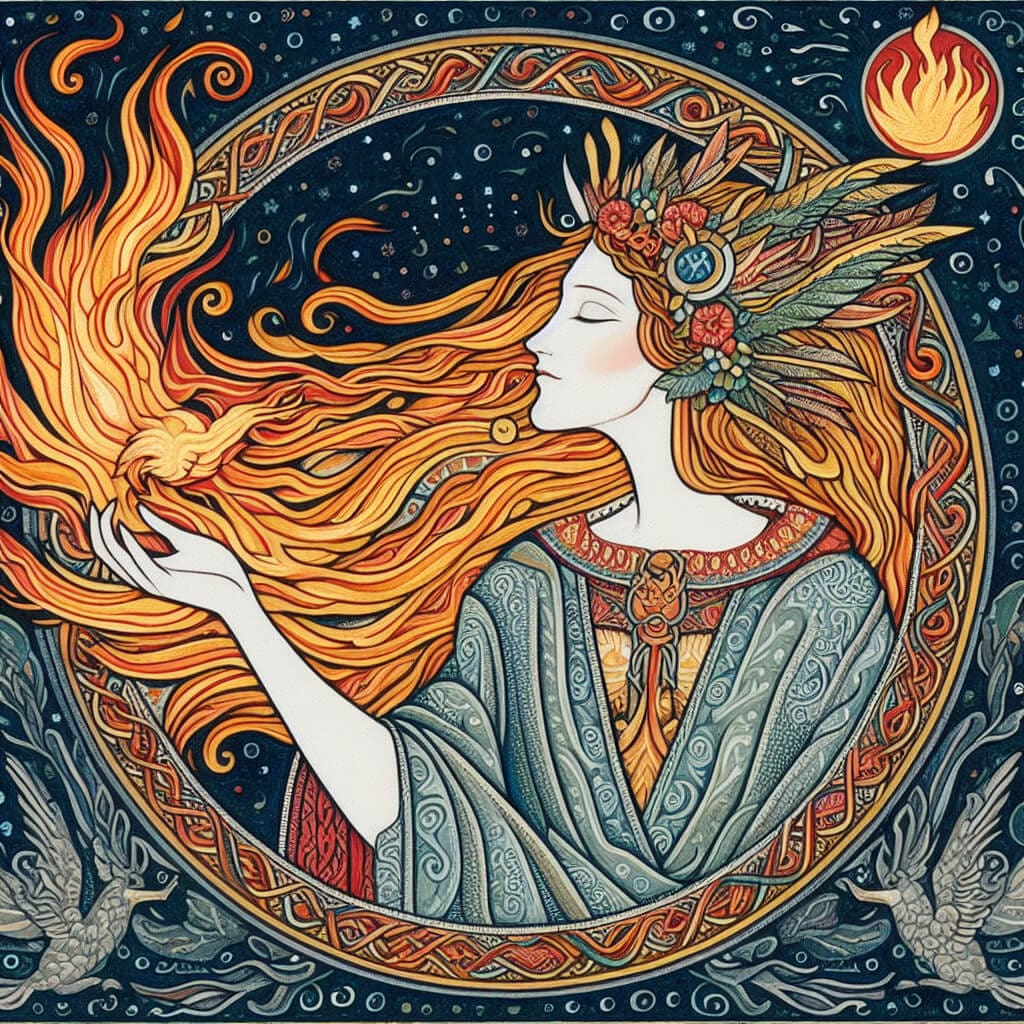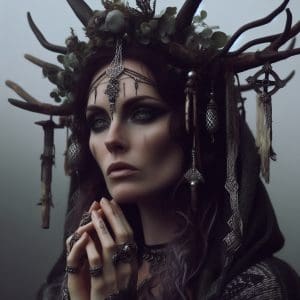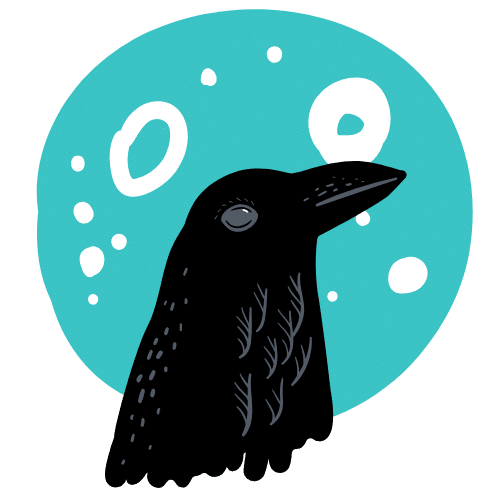LEARN | PAGAN HOLIDAYS | IMBOLC
EVERYTHING YOU NEED TO KNOW ABOUT IMBOLC
A mid-winters dream. Marking the midpoint between the winter solstice and the spring equinox.
Updated: January 21, 2024

Imbolc 2024
When is Imbolc?
In 2024 Imbolc starts on February 1st and ends on February 2nd. “Is it spring yet?” That’s a question often asked around the beginning of February when Imbolc is traditionally celebrated. Imbolc falls midway between the Winter Solstice and the Spring Equinox. It’s like Mother Nature’s reminder that spring is just around the corner, even if your frozen pipes suggest otherwise.
Astrological Insights – Imbolc
The moon will move into Scorpio on Feb 1st 2024 at 3:37pm and will remain there until February 3rd.
Overview
A Time of Renewal: Imbolc, celebrated in February, marks the midpoint between the winter solstice and the spring equinox. It signifies the start of the lambing season and the gradual return of longer days. The word “Imbolc” originates from the Old Irish “i mbolg,” meaning “in the belly,” a reference to the pregnant ewes that foreshadow the coming abundance of spring.
What is the Origin of Imbolc?
Imbolc, also known as Brigid’s Day, has roots reaching back to ancient Celtic traditions. The festival is named after the old Irish word ‘Imbolc,’ meaning ‘in the belly,’ referring to the pregnancy of ewes, a sure sign of impending spring. It’s like the earth itself is expectant, carrying the promise of new life under the veil of winter.
The Colors, Crystals, Scents, Herbs, Plants, Flowers, and Symbols of Imbolc
Each element of Imbolc reflects the gentle stirring of life beneath the frost, the slow but sure turning of the wheel of the year. Embrace this time with a blend of reverence and a light-hearted touch, just like spring tiptoeing after winter.
Colors
- White: Like the lingering snow, white represents purity and a fresh canvas for the year ahead.
- Silver: Echoes the shimmer of ice, symbolizing clarity and reflection during this introspective season.
- Sky Blue: Captures the hopeful essence of the early spring sky, hinting at brighter days.
Crystals
- Clear Quartz: A crystal-clear beacon for clarity and new beginnings, aligning perfectly with Imbolc’s spirit.
- Moonstone: Its connection to the moon and intuition makes it ideal for this introspective time.
- Bloodstone: A grounding stone that also resonates with life’s renewal, echoing Imbolc’s rejuvenating energy.
Scents
- Rosemary: Its fresh, clean scent is perfect for the purification aspects of Imbolc.
- Cedar: Grounding and refreshing, cedar embodies the strength and stability of the awakening earth.
- Lavender: Soothing and calming, it’s like a gentle nudge to relax amid the seasonal shift.
Symbols
- Brigid’s Cross: A tribute to the goddess Brigid, it embodies protection and the dawning of spring.
- Candles: Representing the returning light, they’re essential to chasing away the last shadows of winter.
- Sheaves of Grain: Symbolizing potential growth and the nourishment of new beginnings.
Herbs, Plants, and Flowers
- Basil: A herb of awakening, it’s perfect for stirring those sleepy winter vibes into action.
- Snowdrop: One of the first signs of spring, it’s like nature’s optimistic wink.
- Bay Leaves: Associated with strength and wisdom, they’re a nod to the resilience required to transition seasons.
What is the Symbolism of Imbolc?
Imbolc symbolizes the transition from winter to spring, the awakening of life under the frost, and the increasing power of the Sun. It’s like Mother Nature’s alarm clock, gently nudging life to stir from its winter slumber.
Imbolc Traditions and Customs
Traditional customs of Imbolc range from lighting fires (symbolizing the returning warmth) to creating Brigid’s crosses and corn dolls (symbols of fertility and protection). Some folks also perform divinations, while others take a ‘Brigid’s Bed’ (a small basket with a corn doll and a symbolic phallic wand) to bed with them in hopes of abundant harvests and healthy livestock.
Imbolc Lore
Imbolc is strongly associated with the goddess Brigid, the Celtic goddess of fire, poetry, healing, and smithcraft. It was believed that she would visit virtuous households on the eve of Imbolc and bless the inhabitants. People would leave out items of clothing for her to bless and also food and drink for her journey. It’s as if Brigid herself was the first ‘milk and cookies for Santa’ tradition.

Cailleach: The Crone of Winter and Transformation
Imbolc is intimately tied to the lore of Cailleach, the divine hag of Gaelic tradition. Representing the cold and brutal aspect of winter, Cailleach is said to gather her firewood for the remainder of winter during Imbolc. If she wishes to make the winter last longer, she ensures the day is bright and sunny so she can gather plenty of firewood. This folklore symbolizes the harshness of the last phase of winter, yet also the impending transformation as Cailleach is believed to turn to stone when spring arrives, giving way to Brigid, the goddess of spring. This transformation beautifully mirrors the transition from the dormant to the fertile, a core theme of Imbolc.
Embracing the Duality: From Cailleach to Brigid
The transition from Cailleach to Brigid during Imbolc embodies the profound shift from winter to spring. Cailleach’s waning power and Brigid’s ascending influence represent the cyclical nature of life, death, and rebirth. Celebrating Imbolc involves honoring this duality, acknowledging the darkness before welcoming the light, and preparing for the rejuvenation that spring promises.
What Deities are Celebrated During Imbolc?
While the primary deity associated with Imbolc is the Celtic goddess, Brigid, there are several other deities that are often recognized and celebrated during this festival. They are largely tied to light, renewal, healing, and fertility themes, reflecting the transitional nature of this period from winter to spring. Remember, while these deities are commonly associated with Imbolc, what’s most important is that your celebration resonates with your personal belief system and honors the spirit of the season in a way that feels meaningful to you.
Here are a few examples:
Brigid (or Brighid)
She’s the star of the show at Imbolc. The Irish goddess of fire, hearth, sacred wells, poetry, and smithcraft, Brigid embodies the light and warmth that Imbolc celebrates.
Cailleach
This Celtic crone goddess is often thought to be at her weakest at Imbolc, symbolizing the waning of winter and the promise of spring’s return.
Persephone and Demeter
Eros and Aphrodite
These Greek gods of love may seem more suited to Valentine’s Day, but given the fertility aspect of Imbolc, they also find a place in this celebration.
Dionysus
This Greek god of wine, fertility, and ritual madness represents the intoxicating power of new life stirring in the depths of winter.
Freya
This Norse goddess of love, beauty, and fertility resonates with the themes of renewal and preparation for growth inherent in Imbolc.
Is Imbolc Still Celebrated Today?
Indeed it is! Modern pagans and Wiccans around the world still celebrate Imbolc with feasts, rituals, and crafts. They may not be blessing livestock or divining the weather, but the spirit of renewal and the anticipation of spring is as potent today
The Significance of Imbolc
Imbolc is a potent reminder of the cyclical nature of life. It serves to connect us with the rhythms of the earth, the changing seasons, and the perpetual dance of light and darkness. It signifies renewal, purification, and the promise of brighter days ahead. It’s the Universe’s way of saying, “hang in there, spring’s on its way.”
10 Easy Ways to Celebrate Imbolc
Imbolc is a potent reminder of the cyclical nature of life. It serves to connect us with the rhythms of the earth, the changing seasons, and the perpetual dance of light and darkness. It signifies renewal, purification, and the promise of brighter days ahead. It’s the Universe’s way of saying, “hang in there; spring’s on its way.” So whether you’re dancing around a fire, crafting a corn doll, or simply savoring the promise of spring, Imbolc offers a unique opportunity to align with the rhythms of nature and celebrate the brightening days. Happy Imbolc!
Make Herbal Tea
Imbolc is a time of restoration. Brew a cup of herbal tea like chamomile or mint to reflect and rejuvenate.
Create a Brigid's Cross
Craft a Brigid’s Cross out of straw or grass. It’s a fun DIY project that doubles as a protective charm.
Cook a Seasonal Feast
Prepare a meal with seasonal foods. Root vegetables and hearty grains are especially fitting.
Clean Your Space
Imbolc is all about purification. Do a physical and spiritual clean-up of your home.
Plant Seeds
If the weather allows, plant seeds as a symbolic gesture of the new growth that Imbolc represents.
Make a Donation
Embody the spirit of renewal by donating old clothes or items you no longer need.
Meditate Your Desires
Imbolc is a great time to set intentions. Meditate on what you want to grow in your life.
Craft a Corn Doll
Create a corn doll to honor the goddess Brigid and the spirit of fertility.
Visit a Natural Water Source
As a tribute to Brigid, who is also associated with healing waters, visit a natural water source.
Write Poetry
Get inspired by Brigid, the goddess of poetry, and write a poem.
Learn About Sabbats
You’ve just stumbled upon your new favorite travel guide through the cosmic calendar, the Wheel of the Year.
Imbolc
February
Ostara
March - Spring Equinox
Beltane
May
Litha
June - Summer Solstice
Lughnasadh
August
Mabon
September - Autumn Equinox
Samhain
October
Yule
December - Winter Solstice

Embrace the Moon's Rhythm
Delve deeper into lunar lore with us. Tracking full moons, new moons, and more!
Journey Through Paganism
From sacred holidays to sigil crafting, nature magic, celestial divination, and spiritual energy harnessing.
